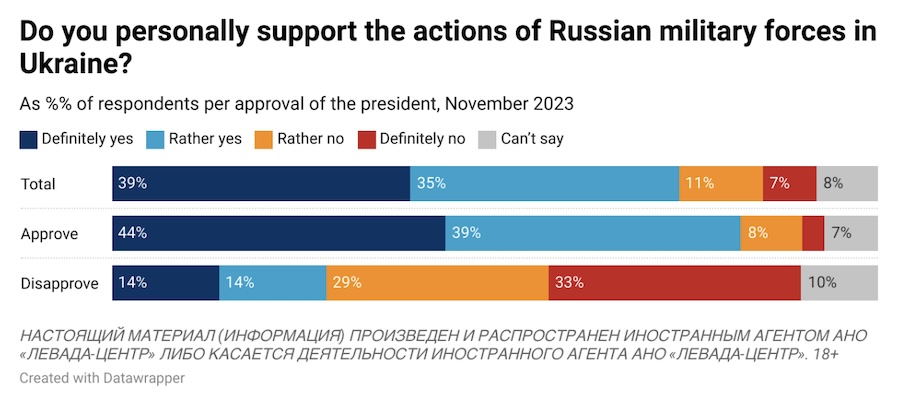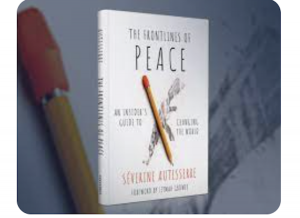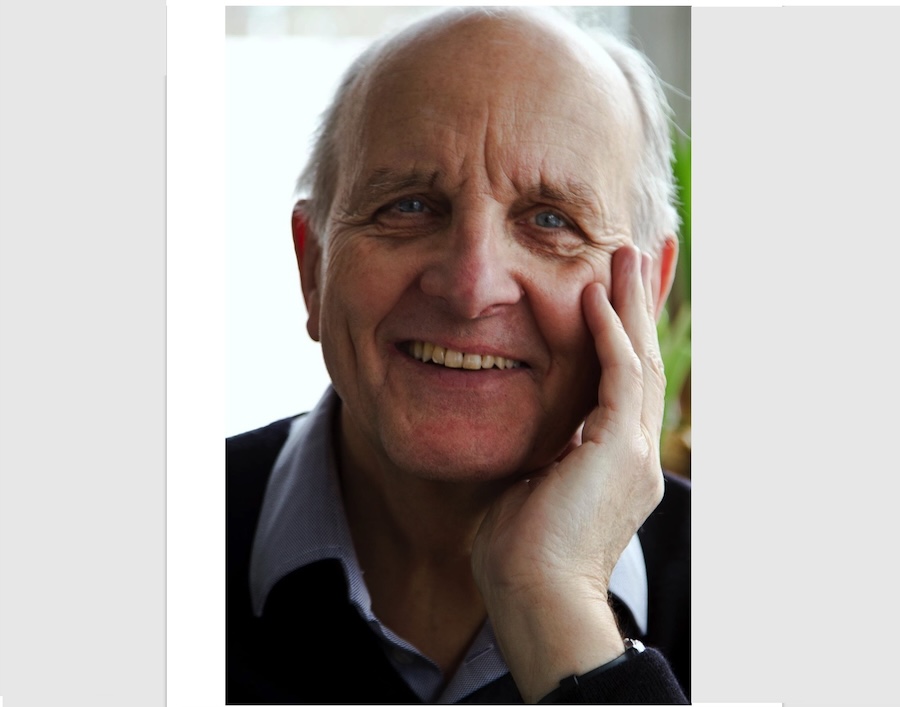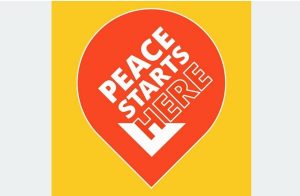EDUCATION FOR PEACE .
Received at CPNN by email
Is it possible to see the UNESCO/UN culture of peace program as a blueprint for a feminist, non-violent security policy? Are there alternatives to war and militarisation, or is the culture of peace just utopia? Can a more pacifist view help us out of the increasing horrors of war?
These are questions that Ingeborg Breines, a former UNESCO director and president of the International Peace Bureau, raises in her new book The Culture of Peace – Utopia or Alternative Security Policy? published May 2023, by the Orkana Publishing House, Stamsund/Oslo. The publication, which is written in Norwegian, has gotten good reviews. It consists of 416 pages in hard cover and includes rich reference material and some illustrations.
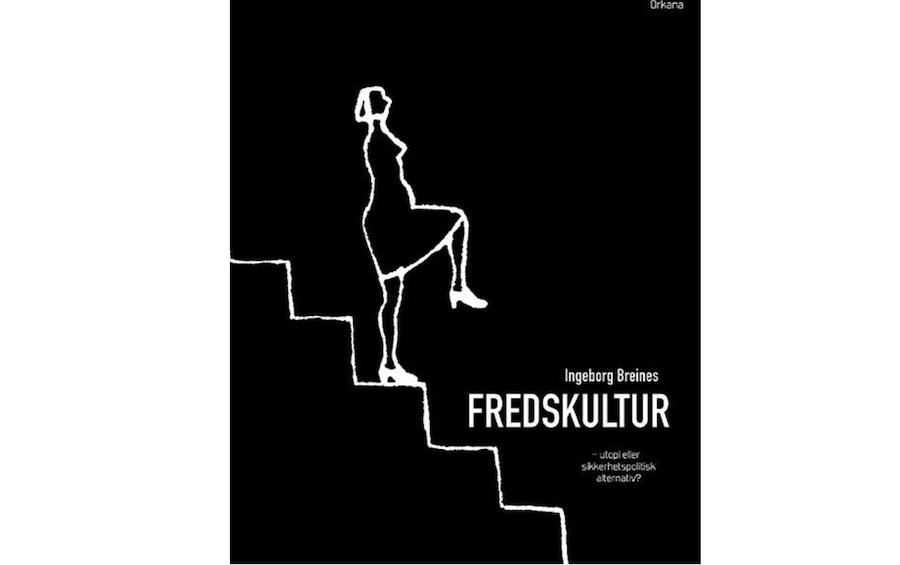
The publication has three parts. The introduction describes the intentions of the author and the challenges facing the culture of peace vision. (See attached table of contents.) The author argues both for peace on earth and peace with the earth. Drawing on her background she challenges the old thinking that “Si vis pacem, para bellum/If you want peace, prepare for war”. For the survival of humanity it is considered urgent to develop a new paradigm and new structures and practices underlining that “If you want peace, prepare for peace”!
Part I describes the culture of peace program of UNESCO/UN – the origin, the process, the vision, the goals, the partners, the hopes, the enthusiasm, the achievements. The author brings to the forefront a series of guiding documents, inspiring projects and publications such as the International Year for a Culture of Peace, the International Decade for a Culture of Peace and Non-violence for the Children of the World, the Manifesto 2000 on a Culture of Peace, the Seville Declaration on Violence, the Statement on Women’s Contribution to a Culture of peace, the Declaration on the Right to Peace and not least the Constitution of UNESCO with its emphasis on international intellectual and ethical cooperation and its credo: “Since wars begin in the minds of men, it is in the minds of men that defences for peace must be constructed” .
Part II highlights factors that hinder the culture of peace to take roots, notably the broad and growing militarization, not only of society but also of the human mind. The author argues that humanity is facing three alarming existential crises: (i) the climate and environmental catastrophe, (ii) the growing gap between the “haves” and the “have- nots”, and (iii) the nuclear arms threat. She considers that the military-industrial complex seriously – economically, ecologically and ethically – stand in the way of finding innovative and sustainable solutions to the challenges facing humanity.
Part III presents an holistic approach to peace-building based on the eight pillars of the UNESCO/UN culture of peace program: (i) Learn to live together, (ii) Promote sustainable social and economic development, (iii) Promote respect for human rights, (iv) Secure equality between women and men, (v) Foster democratic participation, (vi) Foster understanding, tolerance and solidarity, (vii) Promote free flow of information and knowledge, (viii) Foster international peace and security, with special emphasis on pillar one on education and pillar eight on peace-building.
Part III contains descriptions of relevant international structures and institutions, both within the UN system and regional and sub-regional, as well as peace building projects and ideas, including from the international peace movement and visionary individuals. Seen together, the publication provides both important knowledge and suggestions for an effective transition from a culture of war and violence towards cultures of peace and non-violence.
Blurb
Military expenditure was reduced in the period between the fall of the Berlin Wall in 1989 and the attack on the Twin Towers in New York in 2001 and many people started to hope that finally the world’s military and political resources would be used for welfare instead of warfare. UNESCO developed a global program for a culture of peace that got broad and enthusiastic support. Individuals, organisations, institutions and countries contributed to the development of the vision of a culture of peace and got inspiration, energy and sense of community and meaning. The UN, both in a visionary and hopeful way, put the culture of peace as the headline for the new millennium.
But the war against terror changed everything. Also Norway participated in wars in countries where we had no controversies. Fear, enemy images and suspicion were created – again. The climate- and environmental crisis is threatening both humanity and the planet. A worldwide pandemic has further aggravated poverty, violence against women and social unrest.
The war in Ukraine has brought the horrors of war closer to us. Could it lead to disgust for all war, for war as an option? Could the vision and experience of a culture of peace help us stand against a dominating and desperate belief that weapons, ever more numerous, ever more lethal and potentially capable of full extinction of humanity, and that it is necessary in order to build peace and justice? Is the time ripe for acknowledging that it is only through disarmament and détente that we can manage to meet the ecological and social challenges facing us?
This book is a contribution to the strengthening of the world’s fragile peace architecture and gives suggestions as to how a culture of peace may be build through education, diplomacy, dialogue, democracy, justice, gender equality, art, culture and sound common sense.
TABLE OF CONTENTS
Preface
Introduction
Part I – FROM IDEA TO A CULTURE OF PEACE PROGRAM
° The dream of peace and the fight for a world organisation
° Utopia
° The vision
° The League of Nations
° The UN
° UNESCO and the Culture of Peace
– The vision of a culture of peace – a new Millennium – new hope
– The concept of a culture of peace
– The culture of peace program
– The International Year for a Culture of Peace and the UN Decade for a Culture of Peace and Non-violence
for the Children of the World.
– Manifesto for a Culture of Peace
– Culture for peace
– Women and a culture of peace
– National culture of peace programs
– The UN High Level Forum on the Culture of Peace
PART II – WHAT IS THREATENING PEACE AND SECURITY TO-DAY?
° Corona collapse and a new security concept
° Hindrances for a culture of peace
° Military meaninglessness and powerlessness
° ”Security” or peace?
° Militarisation
° Criminalizing war
° War against terror
° Why would a rich country need an arms industry?
° Economic warfare – sanctions
° Hybrid war
° Defensive, non-aggressive defence
° Nato – beyond expiration date
° Closing down Nato
° Our “big” ally
° Star wars
° Norway says no to the UN, yes to Nato
° Russia, our neighbour
° Neighbours as friends, not foes
ENVIRONMENT- AND CLIMATE CRISIS
° Anthropocentric
° Mother Earth
° Nexus environment – security
° The military and the environment
° Ecocide
° Food insecurity
° From capitalism to a new green deal
INEQUALITY AND STRUCTURAL VIOLENCE
° The billionaire report
° The social report
° Inequality between men and women
(Continued in right column)
What are the most important books about the culture of peace?
(Continued from left column)
THE NUCLEAR THREAT
° How to stigmatise, delegitimize and prohibit nuclear arms.
° How many nuclear weapons exist, and where?
° Status symbol?
° It is called balance of terror?
° Usable nukes
° Enough is enough
° First use
° Nuclear weapons agreements
° The Non-proliferation Treaty
° The UN Treaty on the Prohibition of Nuclear weapons, TPNW
Norway, party to the NATO strategy on nuclear weapons
The International Atomic Energy Agency – verification and dual role
° Environmental and health consequences
° Nuclear weapons and nuclear energy – Siamese twins
° Depleted uranium
° Women and nuclear weapons
° Nuclear free zones
° With the UN for nuclear disarmament and development
° Anti-nuclear arms organisations
PART III – UTOPIA OR PRAXIS? POSSIBLE ALTERNATIVE SECURITY POLICY
° Mother Earth and the Matriarchy
° Rather pluralism than unilateralism
° Who do we want to be?
° World future orientation
° Meaning and happiness
° Change and transformation
° Positive thinking
° Emotional intelligence
° Getting out of fundamentalism
° The Seville Declaration on Violence
° Radical love, the ultimate goal?
° Hope
° Creativity
1 LEARN TO LIVE TOGETHER
° Education for all
° Good development requires good education
° Children on the run
° Peace education
° Disarmament education
° Methodology
° It is fun to be nice
° My history – and your history
° What is the situation for peace education in Norwegian schools?
° How to avoid militarization in schools?
° The education of the heart
° Moral codex and ethical standards
° Pakistan – Afghanistan – examples
° To teach a culture of peace in Pakistan
2 PROMOTE SUSTAINABLE SOCIAL AND ECONOMIC DEVELOPMENT
° The desired future – the UN Agenda 2030
° Food security
° Limits to growth
° To do without – what is enough?
° Finance capitalistic globalisation
° Human – humanistic – humanitarian
° Ecologic economy
° What is productive work?
° Useful, bullshit and dangerous jobs
° Converting the military industry
° Progressive taxation
° Guaranteed minimum income – basic salary – citizen’s salary
° Social contract
° Democratic multilateralism
3 PROMOTE RESPECT FOR HUMAN RIGHTS
° The Universal Declaration of Human Rights
° The Human Rights Council
° Universal Periodic Review, UPR
° The International Court of Justice, ICJ
° The International Criminal Court, ICC
° International law – the duty of peace – prohibition of violence
° Humanitarian law– the international law of war
° Responsibility to Protect, R2P
° Norway, a champion of international law?
° From international law to the law of war?
4 SECURE EQUALITY BETWEEN WOMEN AND MEN
° The rights, resources and representation of women
° Gender equality is healthy
° The end of Patriarchy?
° Men and masculinities
° The rationality of care
° Security Council Resolution 1325 on Women, Peace and Security
° Sexualized violence
° Feminism – both a tool for change and an imperative
° Feministic foreign policy
5 FOSTER DEMOCRATIC PARTICIPATION
° Are the people allowed to rule?
° Democracy-ranking
° Direct democracy or disciplined democracy?
° Lobbying
° 99% versus 1%
° Non-hierarchical structure and local democracy
° Centralization weakens local democracy
° Military exceptions
° Thinking globally – acting locally
° Regional cooperation
6 FOSTER UNDERSTANDING, TOLERANCE AND SOLIDARITY
° The grey-pink race and racism
° Symbols and statues
° Longing for meaning
° Religious tolerance – interreligious understanding
° The image of God of Spinoza
° Violations, humiliations of honour and human dignity
° Ethical disposition
° Compassion
7 PROMOTE FREE FLOW OF INFORMATION AND KNOWLEDGE
° New Information and Communication order
° Languages
° News and fake narratives
° Freedom of the Press and Freedom of Expression
° The language of peace – the language of war
° Getting rid of enemy images
° Dialogue – debate – discussion
° Whistleblowers and human rights defenders
° Peace journalism
° Women in the media – women journalists
° War and cultural industry
8 FOSTER INTERNATIONAL PEACE AND SECURITY
° Peace by peaceful means
° The right to peace
° Peace as a condition for sustainable development
° Disarmament, essential, but not in vogue
° How to strengthen the political will to disarm?
° Peace race or arms race?
° Dismantling of national capacities for war
° Preventive diplomacy
° Is the UN able to unite the nations?
° Human security
° Common security
° Pacifism
° Civil obedience – civil disobedience
° Nonviolence
° Conscientious objection – civil service
° Equality in the military – on whose terms?
° Community service – new conscription
° Ministries of a culture of peace
° Peace tax
° Peace movement
° Peace research – research for peace?
° The Nobel Prize for Peace Promoters
° Nobel Summits
° Military-free and environment conscious Costa Rica – a role model
IV ANNEXES
° Bibliography
° UN days
° Acronyms
Ingeborg Breines (i.breines@gmail.com)

